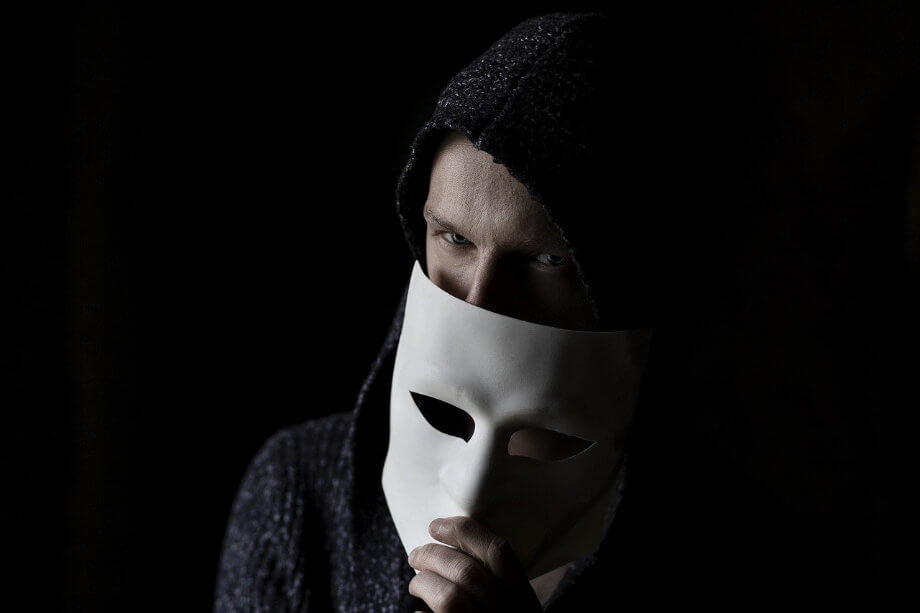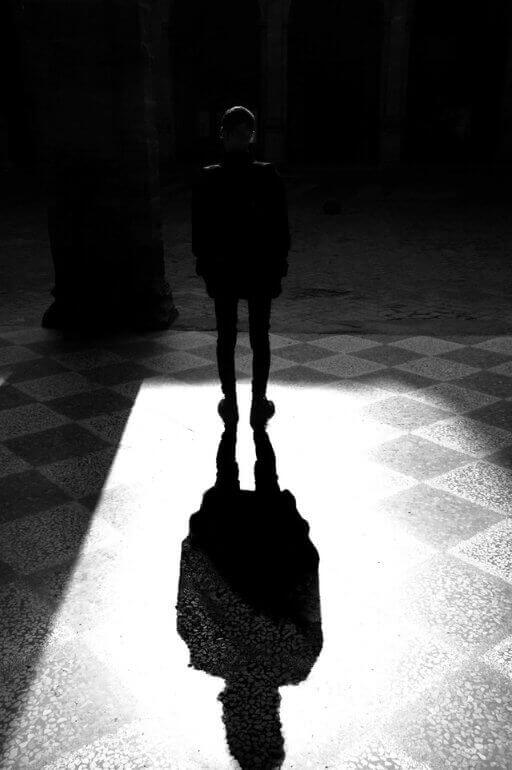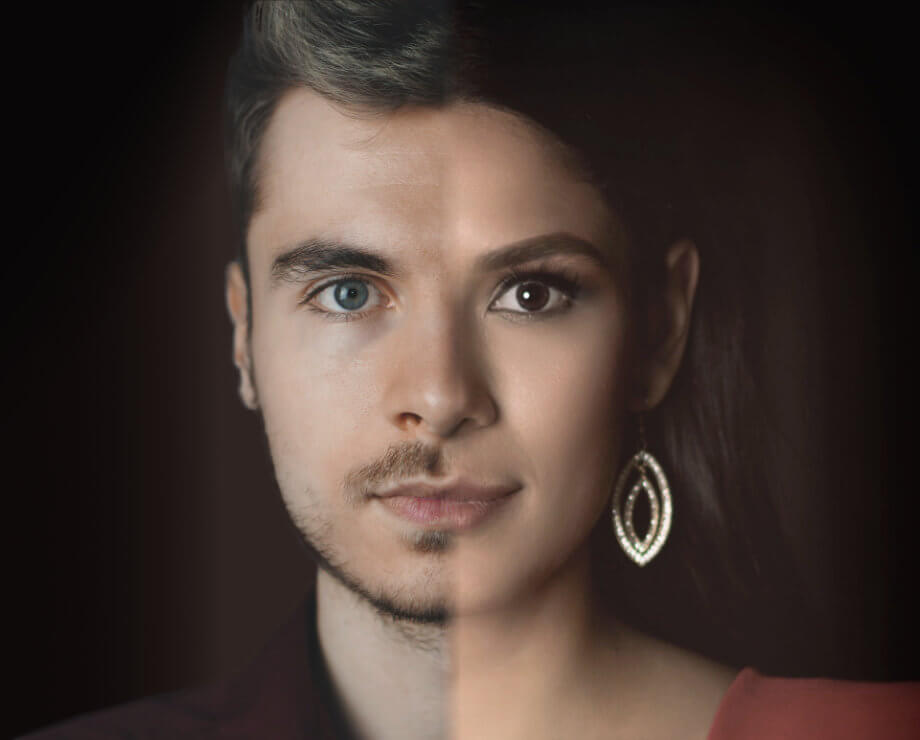This post is part of a larger deep dive
Curious about the role of Jung's dream theory and Jung's model of the psyche in Mulholland Drive? Check out Mulholland Drive Explained!
Or read the full Mulholland Drive article!
This post is part of a larger deep dive
Curious about the role of Jung's dream theory and Jung's model of the psyche in Mulholland Drive? Check out Mulholland Drive Explained!
Or read the full Mulholland Drive article!

As we grow up, we learn that there are certain norms we must adhere to if we don’t want to become the pariah. Children don’t really mind entering tantrum mode as soon as they are refused candy at the supermarket. With time, however, they will realize that these kind of actions are inappropriate, and will begin to behave according to societal expectations – this is your Persona developing.
So, we tend to develop social masks that suppress impulses which aren’t really acceptable in our society. This is how we present ourselves to the world – through different masks – and the Persona archetype coordinates this process.
These masks are largely advantageous, as they help you to flexibly adapt to whatever environment you find yourself in. For example, you might be a real practical joker (you know, placing drawing pins on the chairs of your unsuspecting and unfortunate classmates). If, however, you have landed a fancy, only-tie kind of a job, you’ll probably need to restrain yourself and keep your urges in check, especially when meeting your boss.
As difficult as that may be, you are essentially putting on a mask of a perfect employee whenever you meet your boss, because you want to get on his good side.
With your friends, however, your behavior is likely to be very different (you put on a different mask). So, the Persona archetype exists to help you fit in within the societal context you are in.
Note that your Persona combines not only those elements that you believe society expects from you, but can also contain idealizations of yourself (how you wish to see yourself), and how you want others to perceive you.
It’s also worth discussing the “ego” in the context of the Persona. The ego is everything you believe yourself to be, such as: “I like Pilates”, “I dislike Bob”, “I am a father”, etc. But don’t confuse the ego with the Persona. The ego is only known to you, whereas the Persona is oriented towards other people. In a way, the Persona is a creation of the ego, a kind of shield that hides the ego from its true nature.
Let’s say you are pissed off with your boss; this is the ego speaking: “I’m pissed off with my boss”. But because you need the job, you put on the mask of a good employee, so you act as if everything was fine (this is your Persona).
One problem arises when a person has a weak and under-developed ego. This person might start over-identifying with the Persona, believing that the mask he/she created defines his/her whole identity (in effect, the ego and Persona become the same).
Now, this is really bad because the Persona is very superficial, since it consists of a limited set of characteristics. For example, if you are a teacher and you over-identify with this Persona, you will start to condescend to your wife, kids and friends. So you might start giving them lectures and telling them what to do all the time, because it is your default way of behaving.
This is bad enough for interpersonal relationships, but what if you lose your job? Then your whole world collapses. You will feel lost, rigid and become psychologically ill as a result.

When you form your Persona (by trying to adapt to cultural norms), there are plenty of feelings, desires and ideas, that get repressed. All this “negativity” needs to go somewhere in the psyche, and the Shadow drew the short straw.
Shortcomings, perceived weaknesses, negative feelings or ideas and bad stuff we have done, thought and/or repressed are all dumped into the Shadow. So, the Shadow contains the elements of yourself that you do not want to include in your Persona, because showing the Shadow would be a source of shame and embarrassment.
According to Jung, however, it’s important to come to terms with the Shadow. Why? Because the Shadow is still part of us, and for Jung, the point of living is to become more who we are. We do this by integrating all aspects of ourselves, including our Shadow. Only that way we can be more authentic and complete.
If, on the other hand, the Shadow is not acknowledged, it will become denser and darker, and might eventually engulf your entire psyche, ultimately leading to serious psychological issues.
Note that your Shadow is unconscious – you are not aware that those negative traits belong to you. In fact, your Shadow tends to be projected onto others. For example, let’s say you find someone rather greedy, and you start feeling quite angry towards this person for the slightest comment he/she makes. However, it could be that what you dislike about that person is something within yourself that you unconsciously wished you did not have (e.g., greed). So, you are kind of projecting your own greed onto others, which is adaptive at first, but overdoing it will cause trouble in the long run.

You’ve certainly heard the phrase “embrace your feminine/masculine side”. Well, that pretty much summarizes the Anima/Animus archetype. In the classical Jungian sense, if you’re a man, you’ve got an inner Anima, or unconscious feminine traits; if you are a woman, you’ve got an inner Animus, or unconscious masculine traits.
It’s important to understand that “feminine” and “masculine” here refers to traits that, in conservative early ninetieth-century Switzerland, were commonly perceived to be either masculine (e.g., logical, intellectual) or feminine (e.g., emotional, loving).
Nowadays, most psychoanalysts consider this binary view of the Anima/Animus outdated and, instead, agree that every man and woman express both masculine and feminine aspects that vary along a continuum (e.g., so maybe you are 70% masculine and 30% feminine, or vice-versa).
So, according to Jung, we are psychologically androgynous (i.e., both male and female), which was a pretty radical thought at the time.
Similar to the Shadow, the Anima/Animus contain aspects of yourself that are not manifested in the Persona. This is because, as we grow up, we are encouraged to behave in a certain way, which is in accordance to our gender (think of the son playing swords, and the daughter playing with dolls – parents rarely encourage the exchange of these roles).
The Anima/Animus develops to compensate for this, and so, opposite-gender characteristics, which we are not supposed to show publicly (e.g., like being emotional if you’re a man), are repressed (i.e., sent to the unconscious).
Jung, however, believed that it was important to integrate the Animus/Anima (develop your masculine/feminine aspects) if you want to be true to yourself. This is a pretty important archetype, because it will form the basis of your future relationships with other human beings.
He linked the idea of Animus/Anima to the influence of parental figures. For example, a woman’s relationship with her father (or male caregivers) shapes the masculine image (i.e., the Animus) within her.
When she meets potential romantic partners, her Animus gets projected onto them, so she will choose a man that will be psychologically like her father. If the father was too strict, however, this woman might internalize criticism and a negative Animus will likely arise.
Now, if a woman starts to listen to the stuff the negative Animus is whispering to her in her subconscious, she runs the risk of Animus possession.
This is dangerous territory!
When you are not aware of the influence of your negative Animus on you, you will project it onto others (remember, projection is the unconscious placement of some part of yourself onto another person). You will feel that you are the one being criticized, which, as you can imagine, could be devastating to intimate relationships.
One important takeaway from all this, is that every archetype is present in everyone to some extent, and the entire human personality is the result of a complex interaction among all those archetypes.
Thus, different people will express archetypes with different strengths, although Jung still believed that everyone had a dominant archetype.
The main archetypes described above (Persona, Shadow, Anima/Animus) are considered quintessential, since we tend to rely heavily on them at several stages of life.
However, Jung and followers described myriads other archetypes (e.g., Magician, Hero, Lover, Ruler, just to name a few) that are summoned in various situations, and define some aspect of our personality.
I am particularly interested in what you’ve said about the ‘Organization’ as Diane’s Animus. It especially makes sense if Diane’s condition (illness?) is partly due to her having a ‘fragmented’ Animus – after all, the organization consists of several discreet entities, as you’ve described it.
The way I read Jung, the Animus normally consists of a series of male figures, each existing alone during the stage of animus development in which it corresponds. In Diane’s case, with more than one figure coexisting, perhaps the ‘Cowboy’ figure is a holdover from an earlier stage of Diane’s Animus, the cowboy representing a kind of primitive or ‘base’ male.
Hi Arlen! Great comment, many thanks!
I think your reading of Jung’s Animus is spot on. However, my understanding is that the Animus can appear as different male figures in dreams (even within the same dream). Jung mentions that the type of male figure will depend on the stage of development as you wrote, but it seems there’s no constraint on the number of dream figures that can appear, so long as they all represent that particular Animus stage (for example, a first-stage Animus can appear as Tarzan and then later as Superman in the same dream; but I’d say Tarzan and Gandhi in the same dream would be unlikely).
You do make a very interesting point that the Cowboy may have a prominent role in Diane’s psyche. This is consistent with him being the initiator as well as terminator of Diane’s dream, since he shows up shortly after Diane starts dreaming, and is the cause for her waking up from the dream (when he says: “Hey pretty girl! Time to wake up!”).
One important flaw in my interpretation is that I analysed Diane’s Animus as if she were straight, when in fact Diane is lesbian. Alas, Jung says little about Animus/Anima in same-sex relationships, so I decided to omit this point from my analysis. However, it would be interesting to discuss it further although I think that discussion will be more appropriate for the forum. If you like, you can start a new thread here, and I’ll be happy to dig up on this.
Hi mindbent, and thanks for clearing that up! I tried to make a new post just now at the link you provided, but I can’t tell if the post took or not. (I think I might have corrupted the block ‘footer,)
Hi Arlen
I’m very sorry but I can’t find your post anywhere in the website so probably it didn’t go through.
I performed a few tests just to ensure that the posts are shown and it seems to be working, so would you mind submitting your forum post here again please?
Thank you very much for your patience!
Hi mindbent,
I Just made another comment and it’s showing. Thanks for all your help with this.
For anyone interested, here is the link to the forum thread.
Masterpiece
None
None